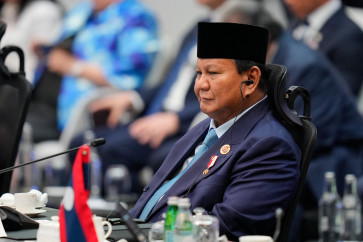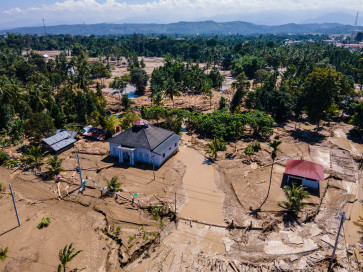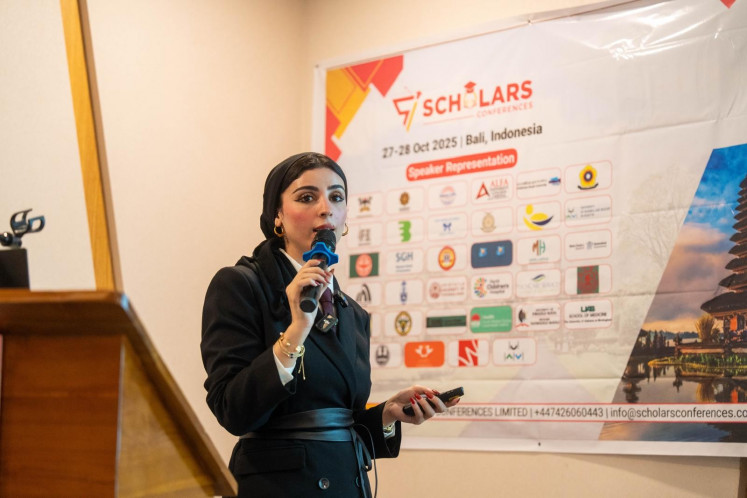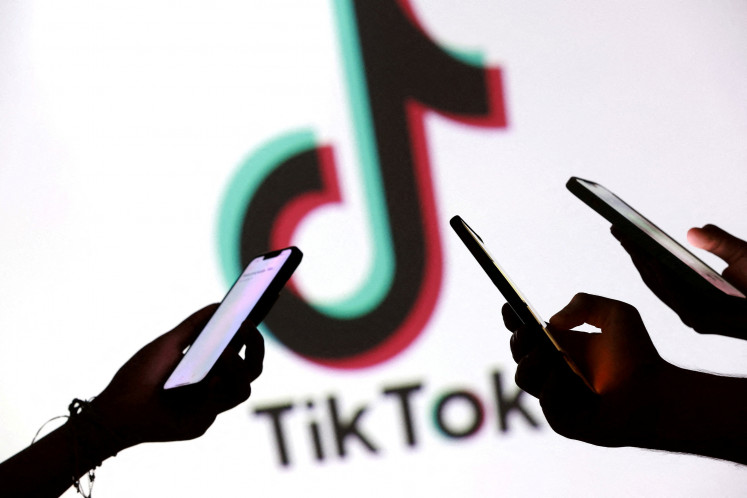Popular Reads
Top Results
Can't find what you're looking for?
View all search resultsPopular Reads
Top Results
Can't find what you're looking for?
View all search results‘Love, Death & Robots’: Fresh take on animation from David Fincher
Each beautifully animated episode explores a different theme, ranging from science fiction and alternative history to modern day fantasy.
Change text size
Gift Premium Articles
to Anyone
I
n this animated anthology series, produced by acclaimed director David Fincher, each beautifully animated episode explores a different theme, ranging from science fiction and alternate history to modern day fantasy. Opening to rave reviews on release, the series does not showcase any prominent stars, but its fresh take on adult animation, science-fiction premises and impressive art speaks for itself.
Love, Death & Robots features 18 shorts ranging from 10 to 20 minutes, each telling an entirely self-contained story with no direct connection to other episodes. Nevertheless, it is this diversity in both story and style that has led to some of the series’ highest highs and lowest lows. The first few episodes stick to the series’ namesake and explore various types of science fiction, ranging from violent thrillers such as Sonnie’s Edge to charming comedies such as Three Robots.
However, there are generally two approaches to the stories being told in the series. The first involves a rich setting upon which the audience is thrust into, and there is a refreshing lack of expository dialogue. It instead focuses on the dynamics between the characters. As for the art style, there is an interesting correlation between it and the type of story being told.
It is interesting that this first type of episode often uses more bright colors and 2D animation to tell its stories, reminiscent of a traditional animated series. These episodes often end at a peak in the action, with such cliffhangers almost reminiscent of the ending of a pilot episode. One critique may be that each of the episodes stops just short of exploring the themes, setting and world it establishes, leaving some in the audience clamoring for a more satisfying conclusion.
This is may be why some of the highest rated shorts are those that remain entirely self-contained in their story. The second approach of storytelling generally tells a self-contained story, which at times may be slightly unoriginal, but more than makes up for it by relying on its animation to captivate the audience. Often these episodes employ extremely detailed 3D rendering to create remarkably lifelike characters that move as smoothly as if real humans played their roles. This is readily apparent in The Witness, a shining example of smooth animation, detailed character design and striking colors, making a rather predictable plot stand out.
However, it is the episodes that break away from both these broad trends in art style and storytelling that excel, for example Zima Blue and Beyond the Aquila Rift. Both tell self-contained stories and are exemplary in both animation and plot. Zima Blue’s unique 2D art style, bold in both colors and shadows, is entirely unique in the series, while Beyond the Aquila Rift is undoubtedly on the cutting edge of 3D-rendered animation in terms of detail, complexity and realism. As for the story, Zima Blue is an allegory with a clear message but potent delivery, whereas Beyond the Aquila Rift explores an interpersonal drama in the depths of space, with hidden dread lurking beneath the veneer of realistic space travel.
Read also: Netflix announces its first animation anthology series
There are also episodes with themes that are not immediately obvious upon first watch, but enhances some of the shorter episodes that may lack substance. For example, Fish Night is an episode with mesmerizing animation but a simple plot that nevertheless allows room for interpretation on themes of nostalgia and youthful idealism. On the other end of the spectrum, the striking gore and sexuality that are prominent in some episodes may seem gratuitous, but in fact enhances the experience of each episode where it appears, most often through jaw-dropping action scenes.
Overall, Love, Death & Robots seems like a step in the right direction and proves that bold new approaches in animation and science-fiction are worth it. One can only hope that this proves to hopeful animators out there that there is room for adult animation beyond comedy, and that original ideas and aesthetics have the ability to gain mainstream acceptance. (mut)










